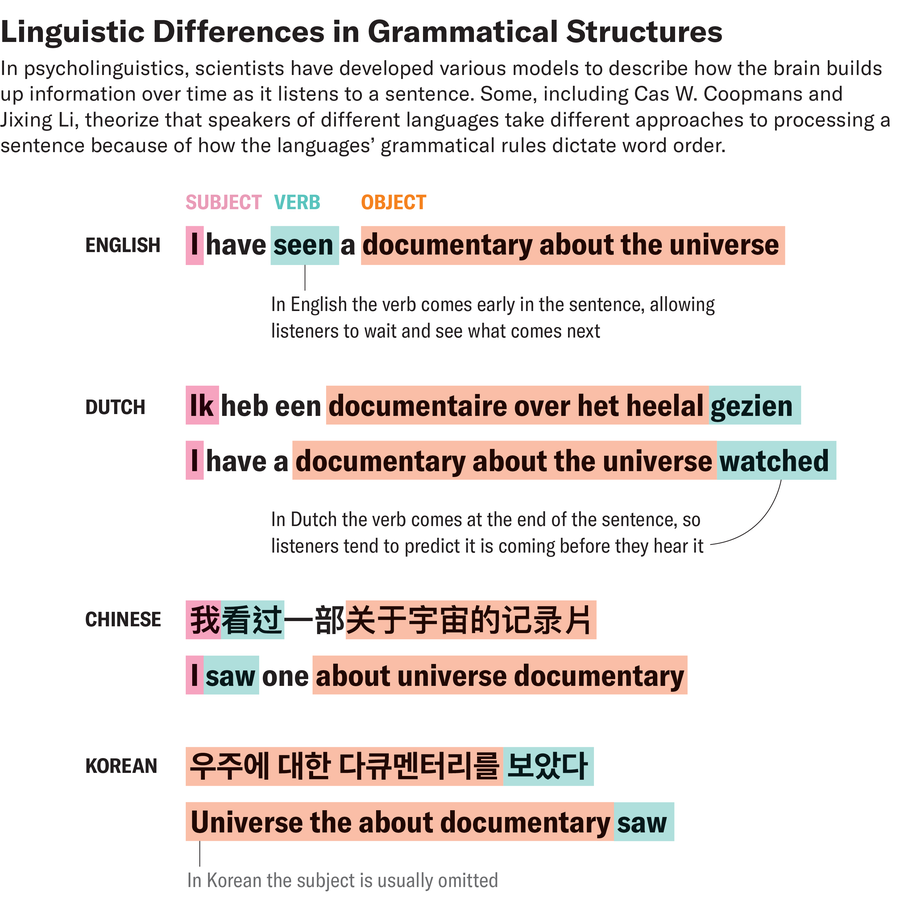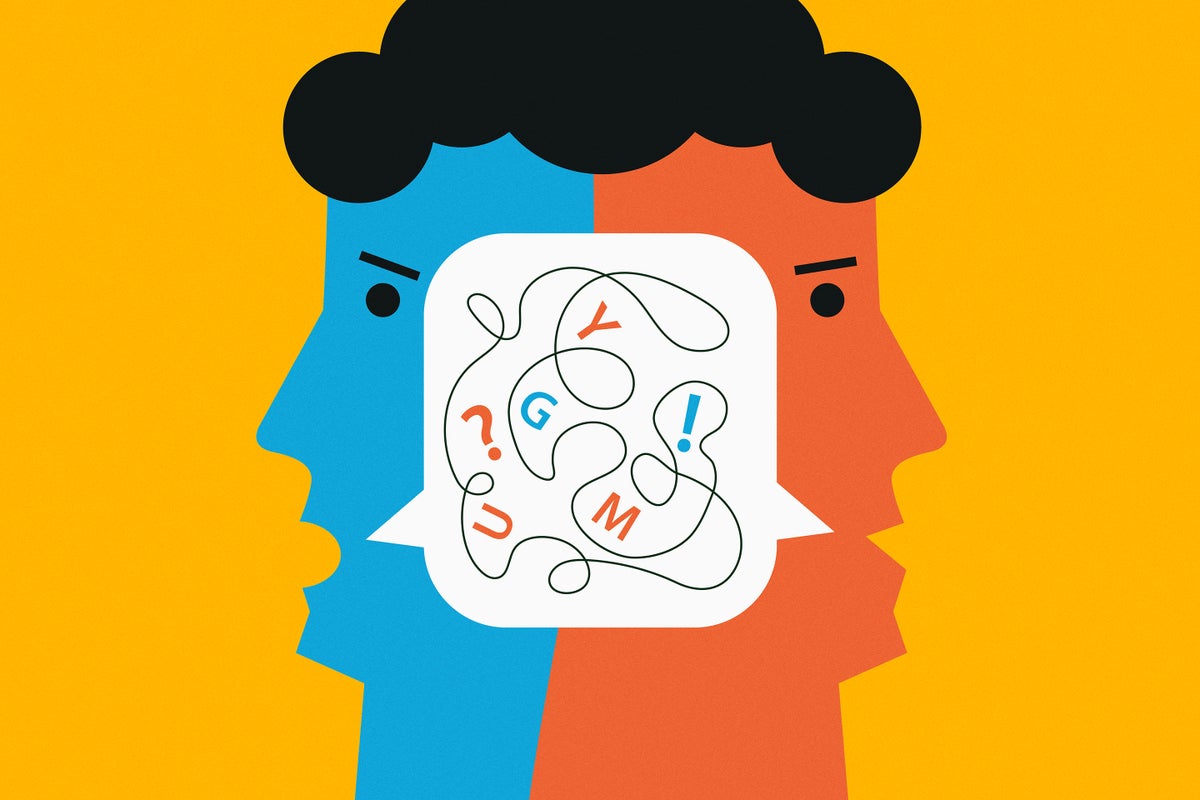Language Differences Control Your Brain’s Sentence-Prediction Habits
The brain’s response to information depends on language’s grammatical structure

Jiri Studnicky/Getty Images
Understanding a simple-looking sentence such as “I read this article yesterday” actually requires some sophisticated conceptual computation: a subject (“I”) performed an action (“read”) on an object (“article”) at a specific time (“yesterday”). But the human brain routinely does this work nearly instantaneously based on the language’s grammatical rules, says linguist Andrea E. Martin of the Max Planck Institute for Psycholinguistics in the Netherlands. And Martin’s team has now found that the human brain accommodates fundamental grammatical differences across languages by adjusting how it processes each sentence.
For a recent study in PLOS Biology, the researchers observed variations in Dutch-speaking participants’ brain waves while they listened to a Dutch-language audiobook. To visualize these changes, the scientists used a metric quantifying how many new “predictions” the brain makes of words that could come next in a sentence. This framework was then tested against three different parsing strategies, or linguistic models that illustrate how the brain builds information over time.
Previous English-based studies with a similar setup concluded in favor of a model where listeners “wait and see” how each phrase in a sentence will end before interpreting it. But the Dutch speakers in Martin’s study leaned strongly toward a highly predictive model; participants tended to preemptively finish each phrase in their head before it was complete. (A third model, in which listeners wait to hear all the phrases in a sentence before interpreting any part of it, is seldom used in either language.)
On supporting science journalism
If you’re enjoying this article, consider supporting our award-winning journalism by subscribing. By purchasing a subscription you are helping to ensure the future of impactful stories about the discoveries and ideas shaping our world today.
In Dutch language structure, verbs come near the end of a sentence rather than immediately after the subject like they do in English, explains study lead author Cas W. Coopmans, a postdoctoral researcher in New York University’s department of psychology. For instance, “‘I ate a cookie with chocolate’ in Dutch would be ‘I the cookie with chocolate ate.’ You would have to wait very long for the verb to come,” Coopmans says. “And that’s probably unrealistically late; you’re probably much more predictive in processing” the sentence.

Neither parsing strategy is necessarily “better or worse” than the other, Coopmans adds. “It just happens to be suited to the language [people] are processing. So we seem to be quite flexible in that you might process one language differently from another simply because they have different properties.”
The findings support the need for scientists to incorporate more diversity when crafting linguistic models, says Jixing Li, a linguist at City University Hong Kong, who was not involved in the new study. Her own work has illustrated how different brain regions activate when processing English or Chinese sentences because of their differing linguistic properties. If these studies are done only in neurotypical English-speaking adults, she says, crucial differences in processing will be missed. Li contends that this limitation defeats the purpose of the models, which are meant to provide a realistic picture of human language-based thinking.
Diversifying subjects in studies of how the brain processes language “is going to help us capture how the brain is [understanding] the structured meaning of language, and the social utility of language, in many different ways,” Martin says. “There’s so much yet to be understood in the brain.”

